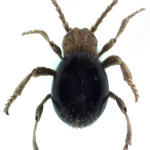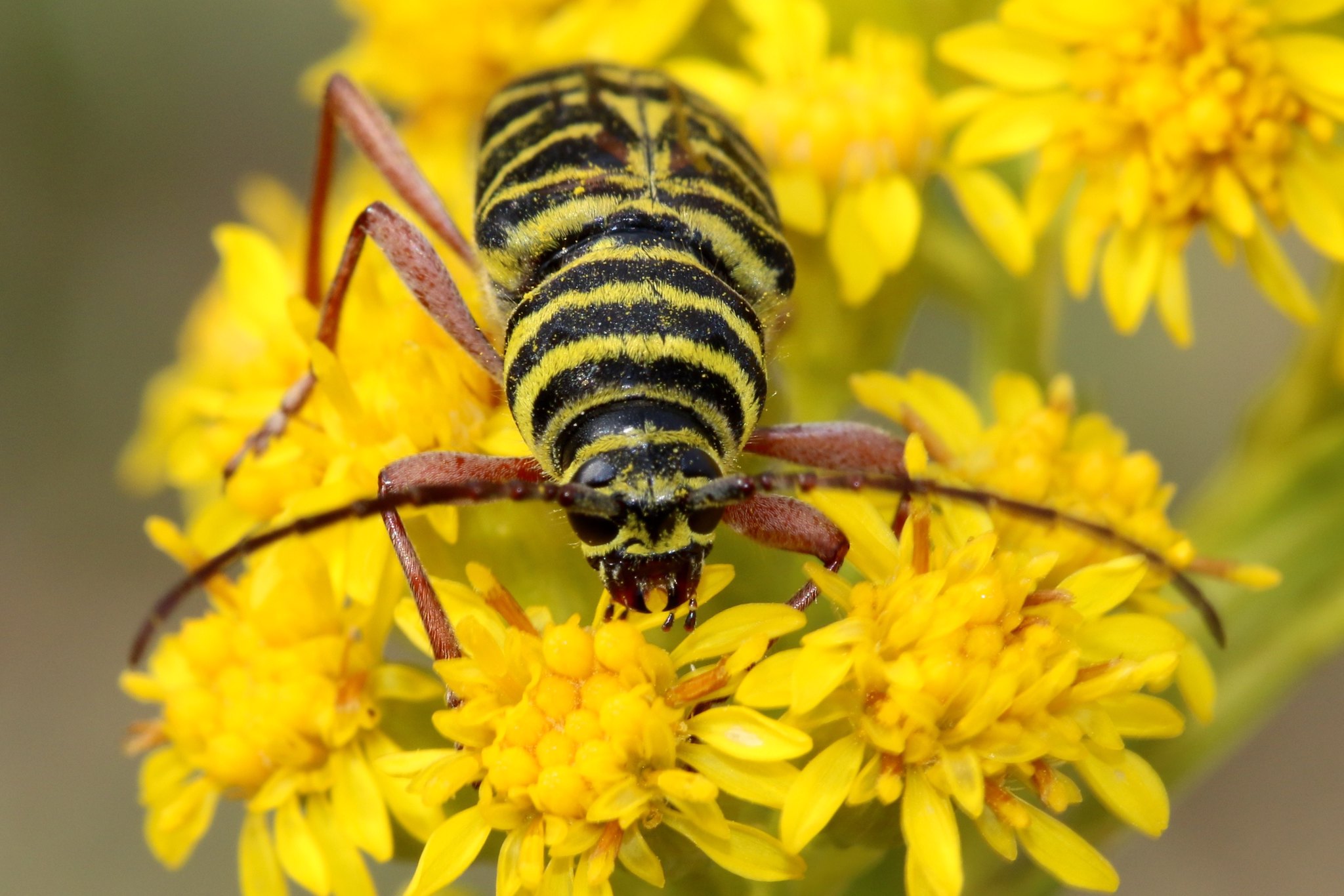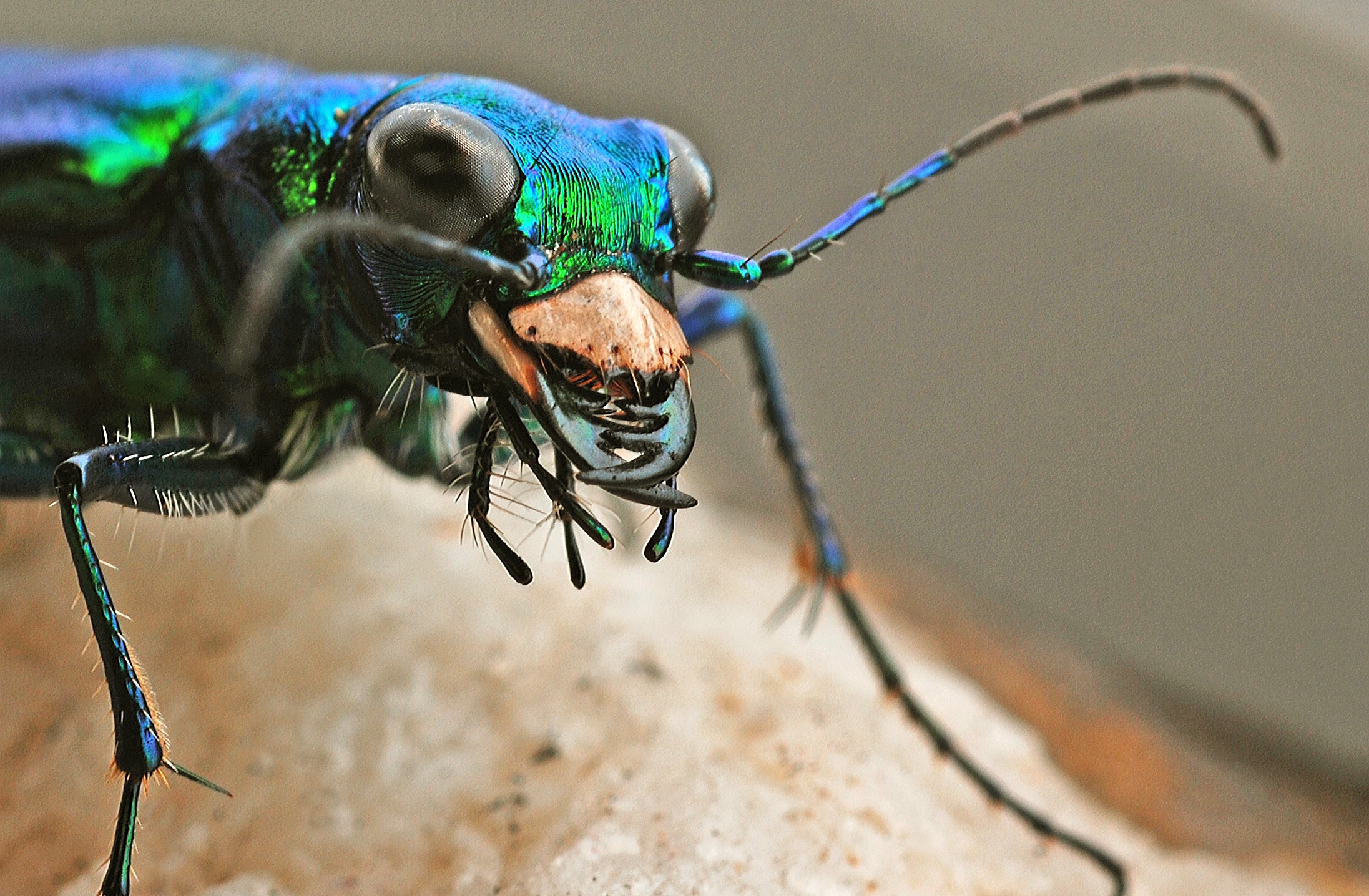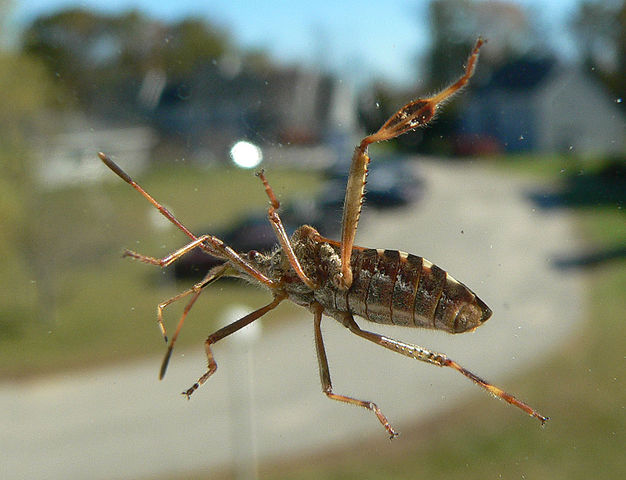Beetles are one of the most ecologically diverse groups of animals on earth. Since their origins about 300 million year ago, this order of insects has proliferated into more than 400,000 species (and counting…). Their success is clearly due to many factors, and I’m sure we’ll revisit this group in the future. For now, I’d like to focus on the fact that many beetles species have evolved to eat just about any conceivable material. To underscore this idea, I should point out that the most species-rich sub-order of beetles is called Polyphaga, which translates literally as “eaters of many things”.
 The idea for this post came after a teacher in my son’s school, let’s call her Mrs. T., asked me to identify a “bug” she’d found in the walls of her apartment. At first glance, they looked like tiny spiders. Under a microscope , the interlopers were clearly spider beetles, Mezium americanum. Reading about the natural history of these beetles, I immediately had questions for Mrs. T. about her apartment. Spider beetles are members of a family of beetles famous for eating the nearly inedible. Mezium is usually found in granaries, warehouses, and mills where it eats dried food stuffs. However, it is closely related to creatures such as the drugstore beetle, cigarette beetle and furniture beetles, which all named after things they have been discovered devouring.(I once visited northern Russia, and surreptitiously collected a few drugstore beetles from a tin of cookies offered by our excellent local hosts.)
The idea for this post came after a teacher in my son’s school, let’s call her Mrs. T., asked me to identify a “bug” she’d found in the walls of her apartment. At first glance, they looked like tiny spiders. Under a microscope , the interlopers were clearly spider beetles, Mezium americanum. Reading about the natural history of these beetles, I immediately had questions for Mrs. T. about her apartment. Spider beetles are members of a family of beetles famous for eating the nearly inedible. Mezium is usually found in granaries, warehouses, and mills where it eats dried food stuffs. However, it is closely related to creatures such as the drugstore beetle, cigarette beetle and furniture beetles, which all named after things they have been discovered devouring.(I once visited northern Russia, and surreptitiously collected a few drugstore beetles from a tin of cookies offered by our excellent local hosts.)
 The next day, I told Mrs. T. about her spider beetles. She was relieved to hear the beetles were no danger to her or her pets. Then I asked her about the history of the building… The apartment building was more than 100 years old and had originally been a grocery store. My guess is that these beetles might have been living in that building a long time, and had managed to survive by eating little bits of almost anything, including tint scattered bits of 100-year old food.
The next day, I told Mrs. T. about her spider beetles. She was relieved to hear the beetles were no danger to her or her pets. Then I asked her about the history of the building… The apartment building was more than 100 years old and had originally been a grocery store. My guess is that these beetles might have been living in that building a long time, and had managed to survive by eating little bits of almost anything, including tint scattered bits of 100-year old food.




